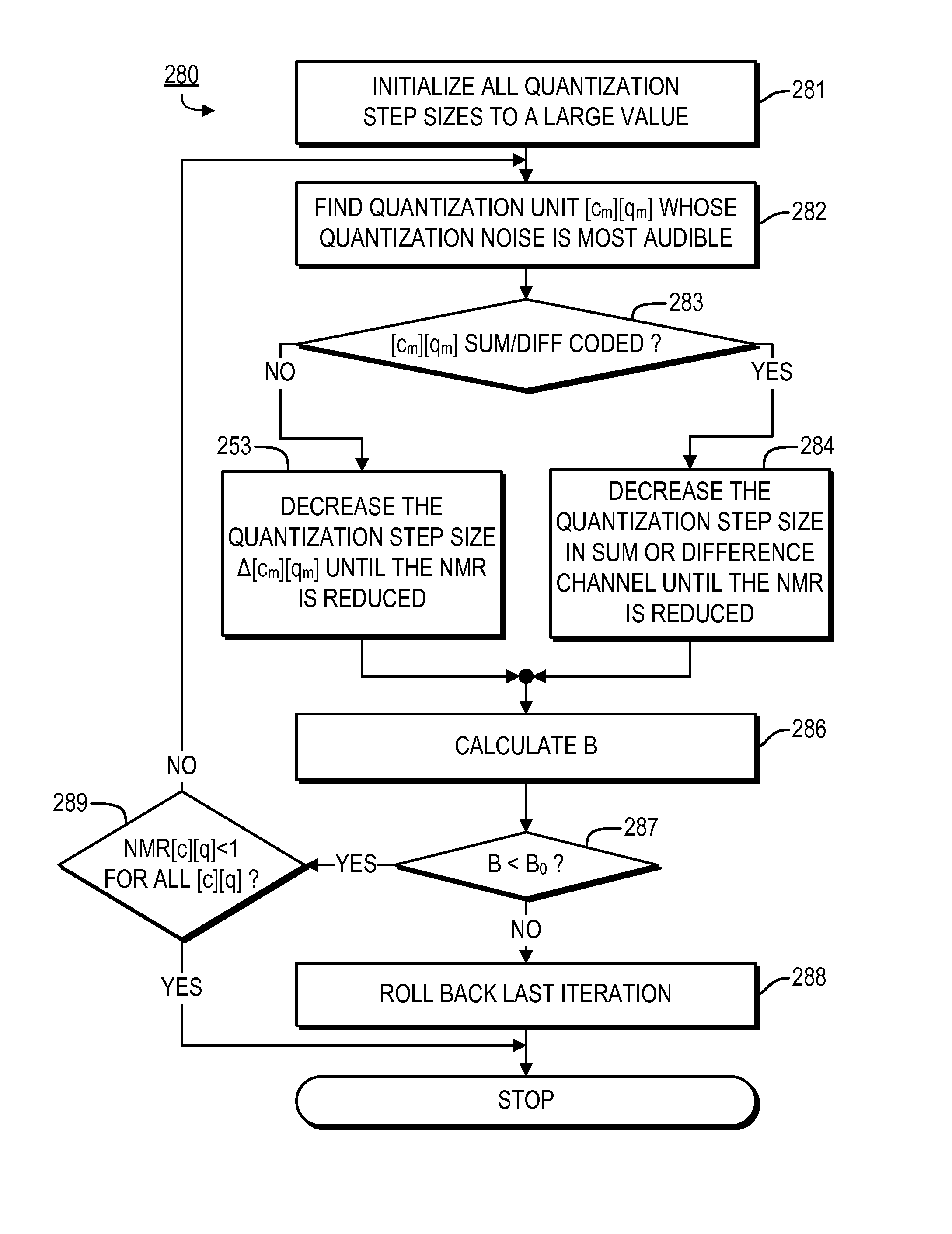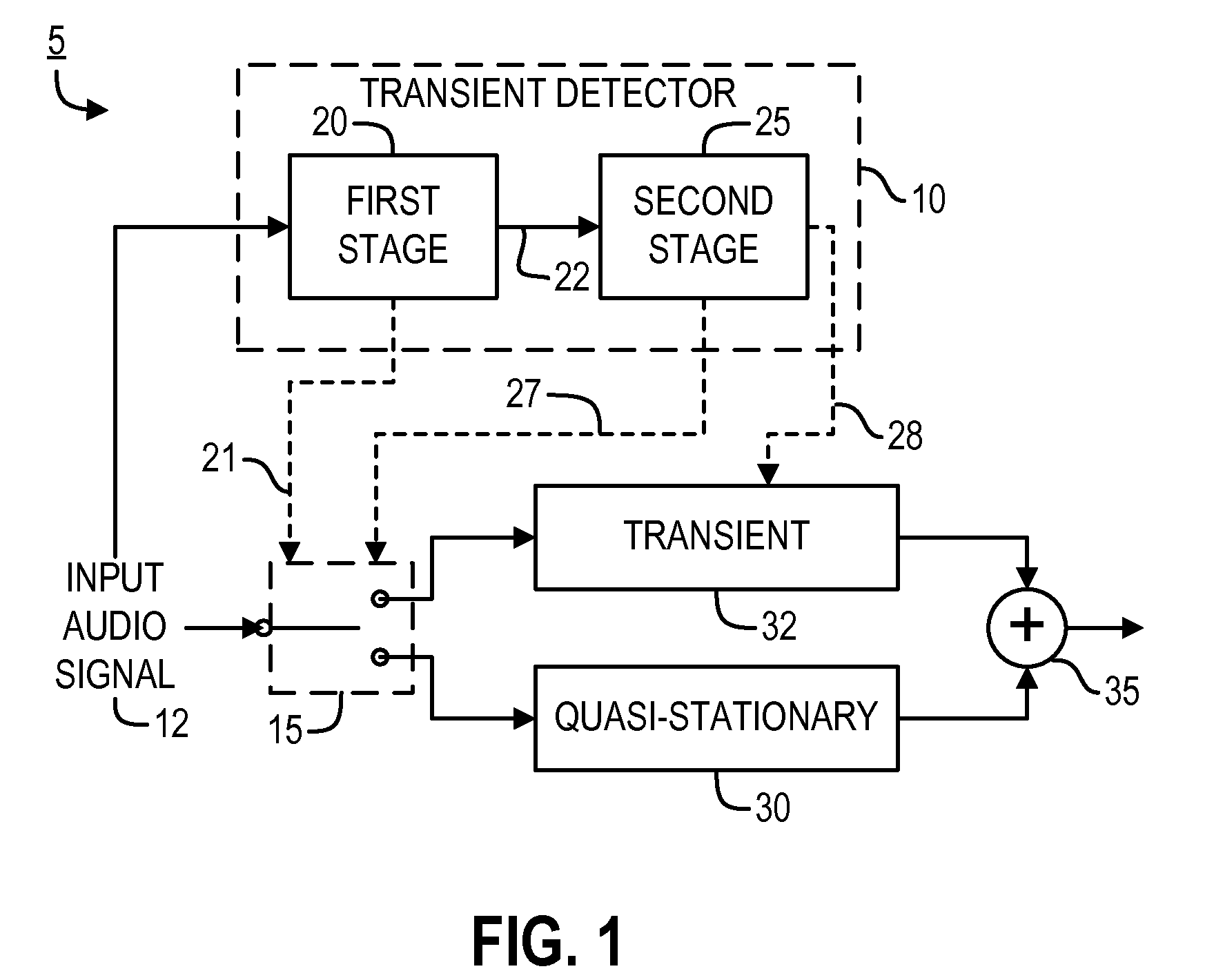Quantizing a joint-channel-encoded audio signal
a technology of audio signal and quantization, applied in the field of quantizing jointchannel encoded audio signals, can solve the problems of significant audible distortion, poor frequency resolution cost of good frequency resolution, and increased frequency resolution cost proportionately poor, so as to achieve efficient and accurate encoding of a given audio signal and good frequency resolution
- Summary
- Abstract
- Description
- Claims
- Application Information
AI Technical Summary
Benefits of technology
Problems solved by technology
Method used
Image
Examples
Embodiment Construction
)
[0023]The present disclosure is divided into sections. The first section describes audio signal transient detection. The second section describes codebook merging. The third section describes joint channel coding.
Audio Signal Transient Detection
[0024]FIG. 1 illustrates an exemplary system 5 within which might operate a transient-detection system or technique 10 (referred to herein as transient detector 10) according to a representative embodiment of the present invention. As shown in FIG. 1, an input audio signal 12 preferably is provided to two components of system 5: the transient detector 10 and processing switch 15. In the preferred embodiments of the invention transient detector 10 includes a first processing stage 20 and a second processing stage 25, and the input audio signal 12 initially is provided to the first stage 20. However, it should be noted that transient detector 10 instead might include a single processing stage that includes any or all of the processing discusse...
PUM
 Login to View More
Login to View More Abstract
Description
Claims
Application Information
 Login to View More
Login to View More - R&D
- Intellectual Property
- Life Sciences
- Materials
- Tech Scout
- Unparalleled Data Quality
- Higher Quality Content
- 60% Fewer Hallucinations
Browse by: Latest US Patents, China's latest patents, Technical Efficacy Thesaurus, Application Domain, Technology Topic, Popular Technical Reports.
© 2025 PatSnap. All rights reserved.Legal|Privacy policy|Modern Slavery Act Transparency Statement|Sitemap|About US| Contact US: help@patsnap.com



